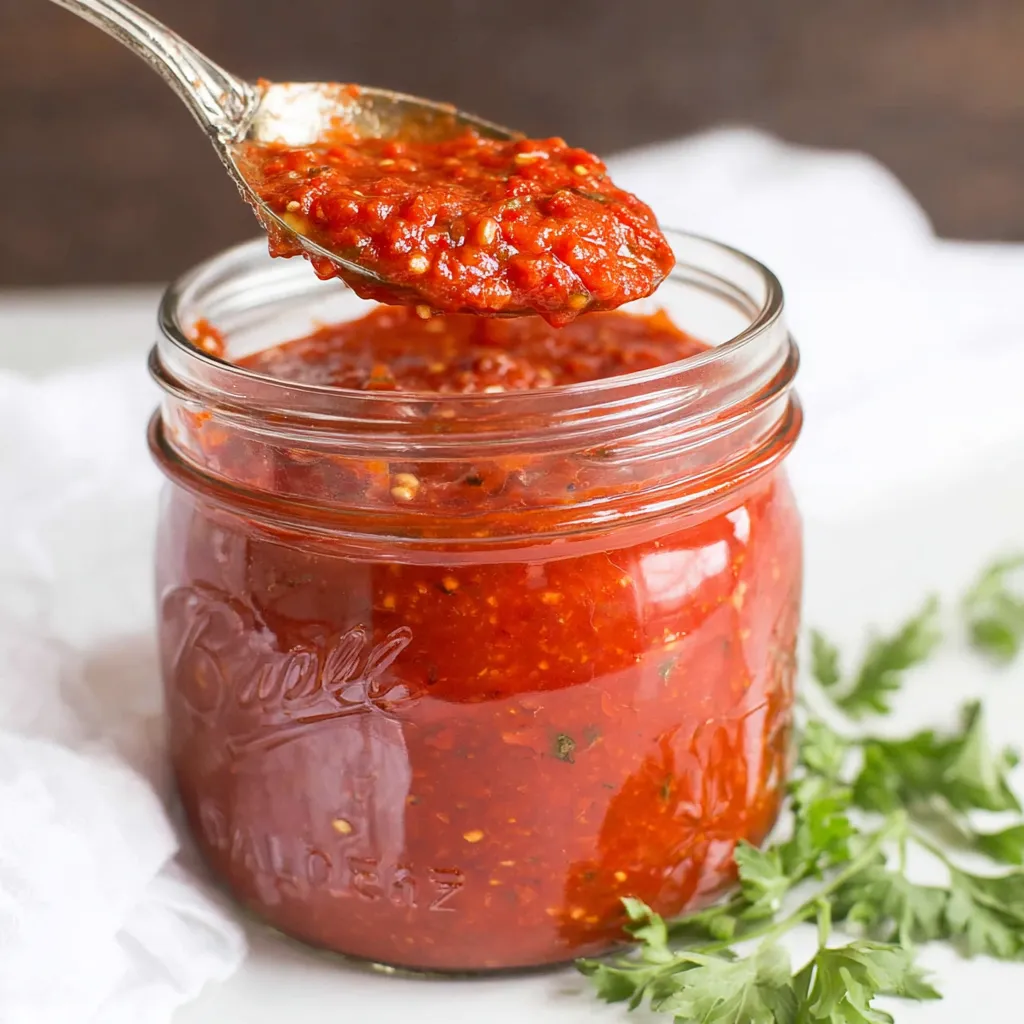Ingredients
Equipment
Method
- Wash and core the tomatoes. Peel if desired by blanching in boiling water for 30-60 seconds, then plunging into ice water. Quarter the tomatoes.
- In a large stockpot or Dutch oven, heat the olive oil over medium heat. Add the diced onions and cook until softened and translucent, about 5-7 minutes.
- Add the minced garlic and cook for another minute, until fragrant, being careful not to burn it.
- Add the quartered tomatoes to the pot. Bring to a simmer, then reduce the heat to low, cover, and cook for about 1-2 hours, stirring occasionally, until the tomatoes have broken down and softened considerably.
- If desired, use an immersion blender to blend the sauce directly in the pot, or carefully transfer the sauce in batches to a regular blender or food mill. Be extremely careful when blending hot liquids. Return the blended sauce to the pot.
- Stir in the tomato paste, dried oregano, dried basil, dried thyme, sugar, salt, and black pepper. Add red pepper flakes if using.
- Simmer the sauce, uncovered, for another 30-60 minutes, or until it reaches your desired consistency. Stir frequently to prevent sticking and burning. The longer it simmers, the richer the flavor will be.
- Taste and adjust seasonings as needed, adding more sugar if the tomatoes are particularly acidic, or more salt and pepper to taste.
- While the sauce is simmering, prepare the canning jars. Wash them thoroughly in hot, soapy water and rinse well.
- Sterilize the jars by placing them in a boiling water bath for 10 minutes. Keep the jars hot until ready to fill. Alternatively, sterilize in the dishwasher with a sterilize cycle.
- Heat the canning lids in a small saucepan of simmering water. Do not boil.
- Remove the sterilized jars from the hot water using a jar lifter. Place them on a clean kitchen towel-lined surface.
- Add the appropriate amount of citric acid to each jar: 1/4 teaspoon per pint jar OR 1/2 teaspoon per quart jar. This is crucial for safe canning.
- Using a wide-mouth funnel, ladle the hot spaghetti sauce into the hot jars, leaving 1/2 inch of headspace (the space between the sauce and the top of the jar).
- Remove any air bubbles by gently tapping the jars on the counter or using a non-metallic spatula to run along the inside of the jar.
- Wipe the rims of the jars with a clean, damp cloth to remove any spills or drips.
- Place a hot lid on each jar, and screw on the band until fingertip tight (not too tight, not too loose).
- Place the filled jars in the canning rack of the water bath canner, ensuring the jars are not touching each other.
- Add enough hot water to the canner so that the water level is at least 1 inch above the tops of the jars.
- Bring the water to a rolling boil.
- Once boiling, process the jars for the recommended time: Pints: 35 minutes, Quarts: 40 minutes. (Adjust processing time for altitude – check local extension office guidelines).
- Turn off the heat and let the jars sit in the hot water for 5 minutes before removing them. This helps prevent siphoning.
- Carefully remove the jars from the canner using a jar lifter and place them on a clean kitchen towel-lined surface, leaving space between the jars.
- Let the jars cool completely, undisturbed, for 12-24 hours. Listen for a "pop" as the jars seal.
- After 12-24 hours, check the seals of the jars. The lids should be concave and not flex when pressed.
- If any jars did not seal, reprocess them with new lids (within 24 hours) or store them in the refrigerator and use them within a week.
- Remove the bands from the sealed jars (this prevents rust).
- Label the jars with the date and contents.
- Store the canned spaghetti sauce in a cool, dark, and dry place. Properly canned spaghetti sauce can last for 12-18 months.
Notes
For a richer flavor, roast the tomatoes before simmering. Toss with olive oil, salt, pepper, and herbs, then roast at 400°F (200°C) until softened. Feel free to add other vegetables like bell peppers or zucchini, sautéing them with the onions. Always use the specified amount of citric acid for safe canning. Headspace is crucial for proper sealing. Store sealed jars in a cool, dark place for up to 18 months.
